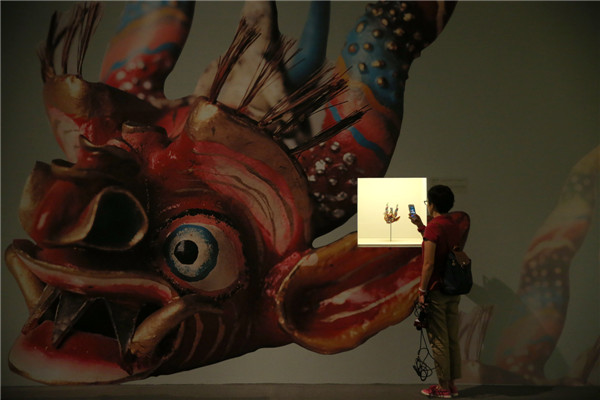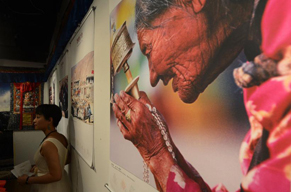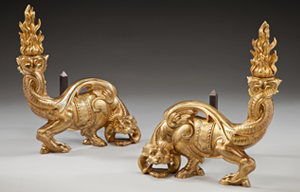

 |
|
[Photo by Jiang Dong/China Daily] |
Curators say these masks bear witness to man's stunning creativity in using materials including leather, porcelain, jade, vine and plastic, and mastery of handicraft skills such as weaving, carving, embroidering and color painting.
"Personally, I recommend the Kodiak mask. The wooden mask from Alaska is hailed as one of the most important works in the world's history of art and culture,"says Chinese co-curator Huang Yi.
"It was carved with very simple lines, and its form resembles an instant moment of nature — a drop of water. When viewers observe the mask from different angles, they will feel the different emotions the mask conveys,"he says.
Last year, the National Museum of China held its first exhibition at the Quai Branly Museum introducing Chinese culinary culture. Huang hopes the Quai Branly will surprise Chinese curators and audiences with more novel displays.
"When I visited the museum last year, I was very impressed by an exhibition about human hair. It showed people's understanding about their physical features, and dug further to discuss the issues of religion and fashion, as well as the relation between colors and mood,"he says.
He says such international cooperation will extend Chinese exhibitors' interpretations of their collections, by which they can popularize the knowledge of history and traditions in a dynamic way.
"Our recent collaborations with such world museums as the Metropolitan Museum of Art and the British Museum help compensate our weakness in alien collections,"the National Museum of China's deputy director Chen Lusheng says.
"More importantly, via these joint exhibitions, our staff members are given wider exposure to curatorial ideas and exhibition planning."
| Top 10 Chinese art works sold at auctions for 2013 | Antiques at auction |



